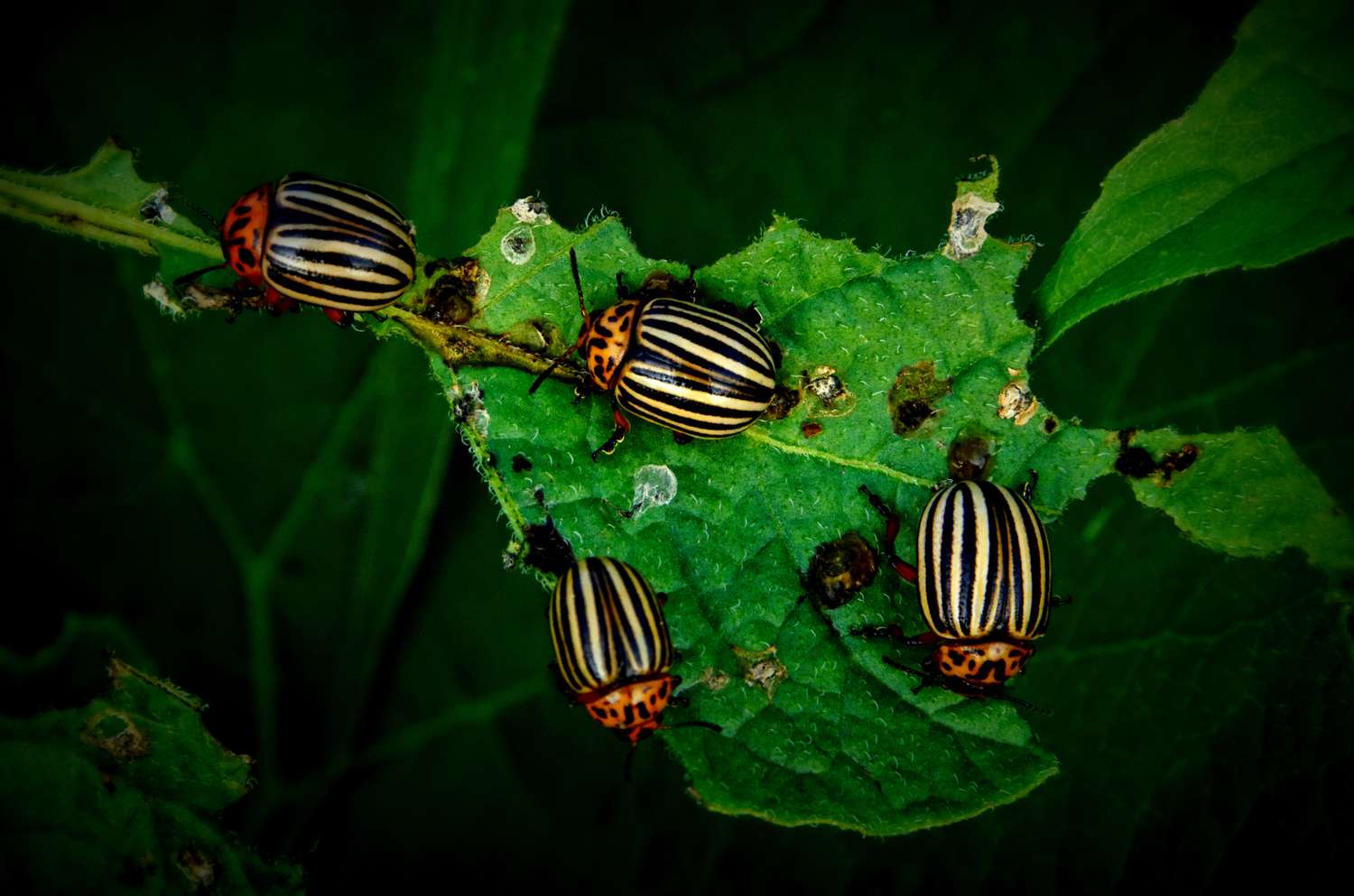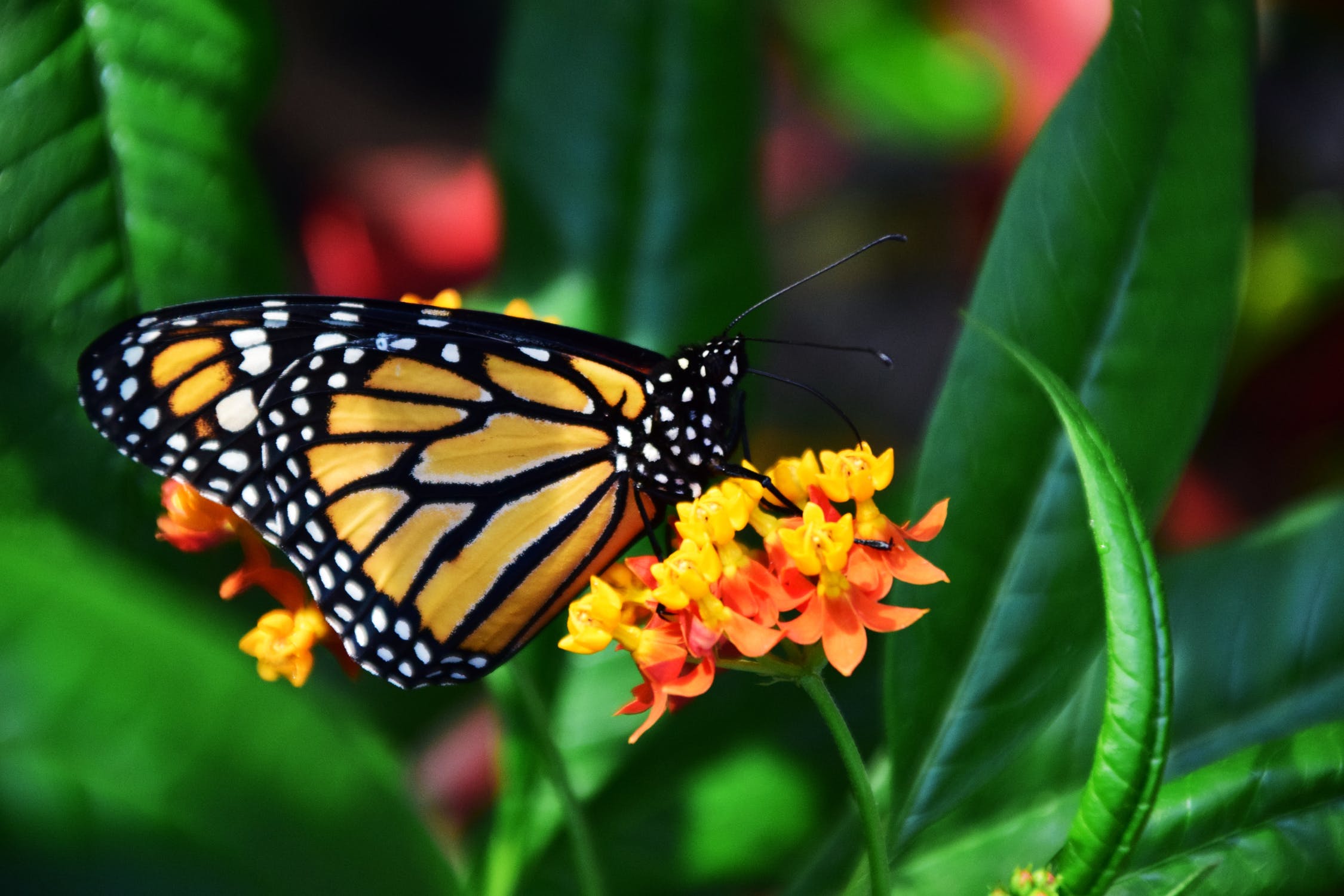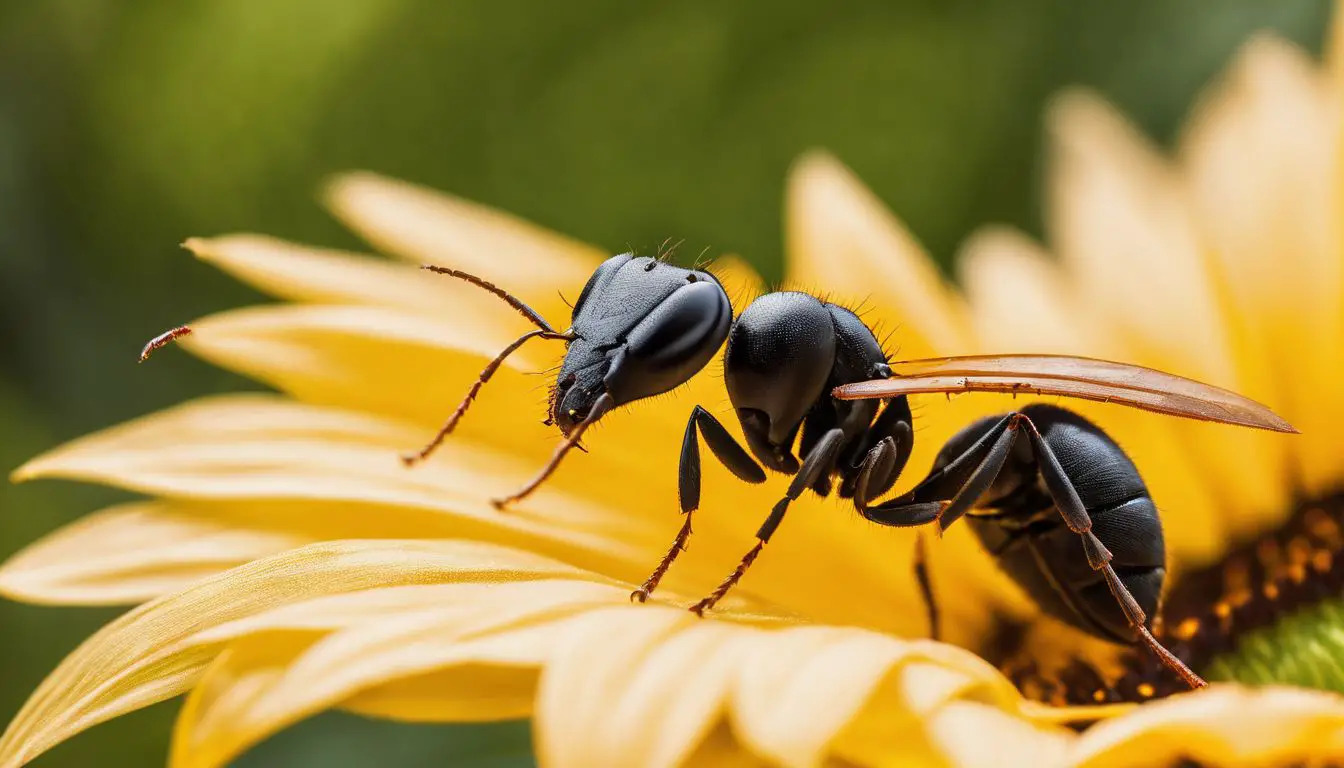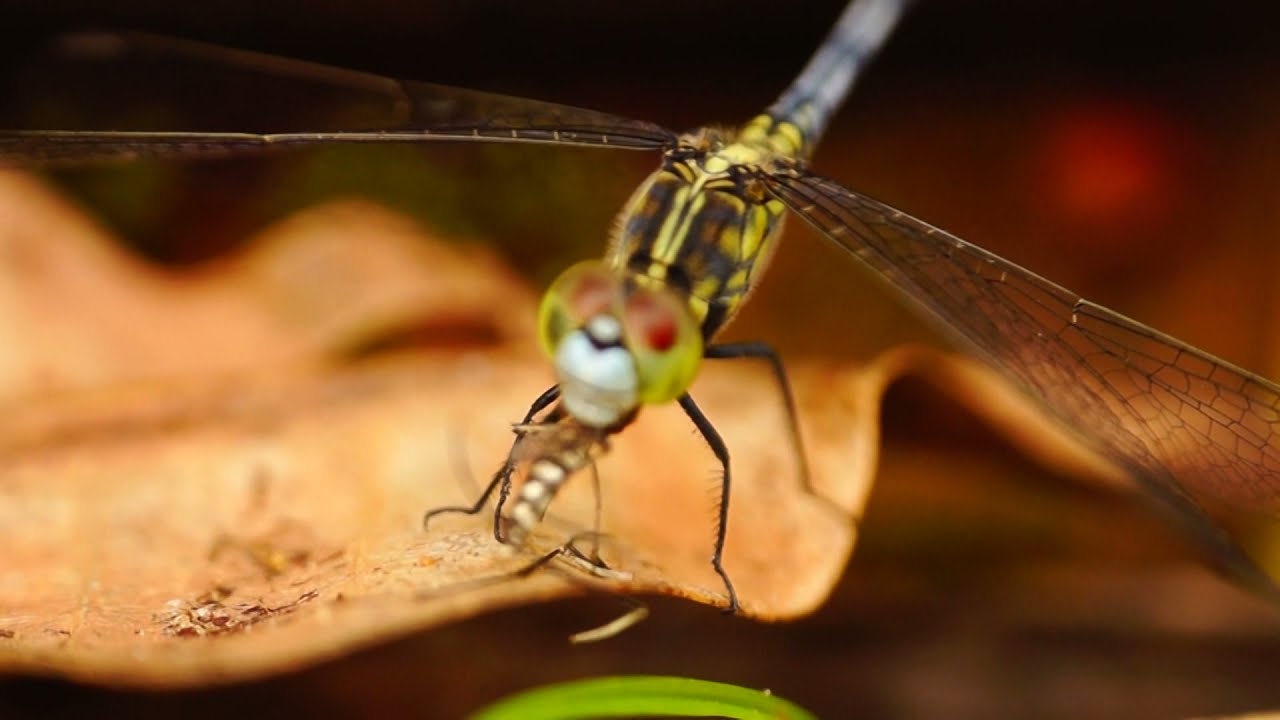Home>Gardening News and Trends>Latest News>What Snakes Eat Insects
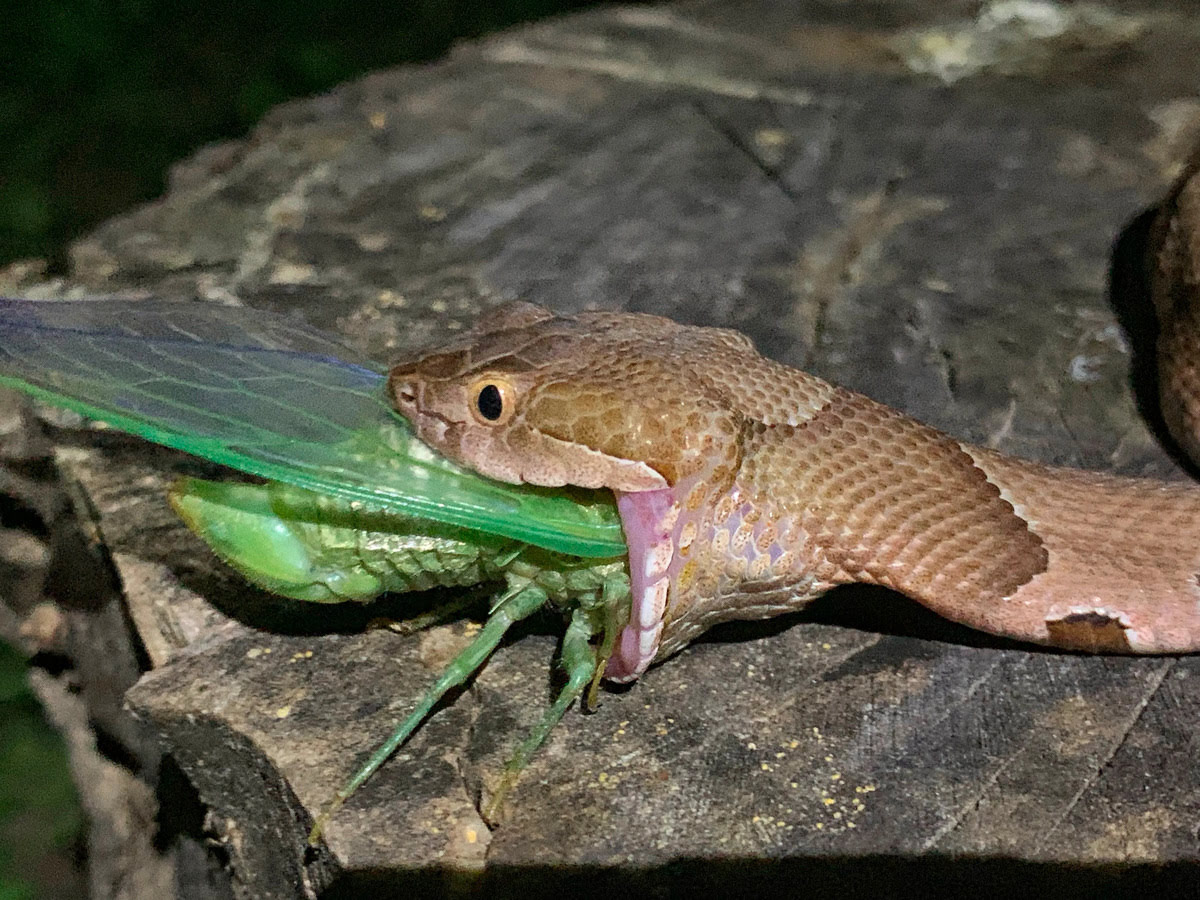

Latest News
What Snakes Eat Insects
Modified: January 22, 2024
Discover the latest news on what snakes eat insects. Explore fascinating insights into the feeding habits and preferences of these incredible reptiles. Stay informed and expand your knowledge!
(Many of the links in this article redirect to a specific reviewed product. Your purchase of these products through affiliate links helps to generate commission for Chicagolandgardening.com, at no extra cost. Learn more)
Table of Contents
- Introduction
- Importance of Insects in Snake Diet
- Types of Insects Consumed by Snakes
- Nutritional Value of Insects for Snakes
- Hunting Techniques and Adaptations of Snakes
- Factors Affecting Snake-Insect Interactions
- Predatory Behavior of Snakes towards Insects
- Benefits and Drawbacks of Insect Consumption for Snakes
- Conclusion
Introduction
Welcome to the fascinating world of snakes and their dietary preferences! While snakes are often associated with devouring larger prey such as rodents and birds, they also have a strong appetite for smaller creatures, including insects. Insects form an integral part of the snake’s diet, providing them with a supplemental source of nutrition in addition to their primary prey.
Snakes have evolved over millions of years to adapt to their specific environments, and their diet plays a crucial role in their survival and reproduction. Insects offer a readily available and abundant food source for snakes, especially in environments where larger prey may be scarce. While some snake species exclusively consume insects, others rely on them as a vital part of their diet during specific periods or as a supplement in times of need.
The consumption of insects by snakes is not only beneficial for their survival, but it also offers several advantages from an ecological standpoint. Snakes help to control insect populations, preventing their unchecked growth, and maintaining a healthy balance within ecosystems. Understanding the types of insects consumed by snakes, their nutritional value, and the hunting techniques employed by snakes can provide valuable insights into the intricate web of predator-prey relationships.
In this article, we will explore the importance of insects in the snake diet, the types of insects consumed by snakes, and the nutritional benefits they provide. We will delve into the hunting techniques and adaptations of snakes that enable them to successfully catch and consume insects. Additionally, we will discuss the factors that influence snake-insect interactions and the predatory behavior exhibited by snakes towards their tiny prey. Finally, we will weigh the benefits and drawbacks of insect consumption for snakes, shedding light on the significance of insects in their overall diet.
Importance of Insects in Snake Diet
Insects play a crucial role in the diet of many snake species, offering a diverse array of nutritional benefits. While snakes are primarily carnivorous, consuming a wide range of prey including mammals, birds, and reptiles, insects provide them with a convenient and accessible food source. Let’s explore the significance of insects in the snake diet.
Firstly, insects are rich in protein, which is essential for the growth and development of snakes. Protein is the building block of tissues and plays a vital role in muscle development, organ function, and overall body maintenance. Snakes, especially young ones, require a high protein diet to support their rapid growth. Insects, such as crickets, mealworms, and grasshoppers, are rich in protein and are an excellent source of nutrition for snakes.
Secondly, insects are often rich in essential vitamins and minerals that snakes need to maintain their health. For example, some insects contain high levels of calcium and phosphorus, which are crucial for the development and maintenance of strong bones and muscles in snakes. These nutrients are especially important for female snakes during reproductive periods, as they require additional calcium for producing sturdy eggshells.
Moreover, the diversity of insects provides snakes with an opportunity to consume a variety of nutrients. Different species of insects have different nutritional compositions, allowing snakes to acquire a broad spectrum of vitamins, minerals, and essential fatty acids. This dietary variety can contribute to the overall health and well-being of snakes, enhancing their immune system and increasing their chances of survival.
In addition to their nutritional value, insects serve an ecological purpose in the snake diet. Snakes, as apex predators, help to regulate insect populations, preventing outbreaks and maintaining a balanced ecosystem. By preying on insects, snakes play a vital role in controlling their numbers and preventing potential pest infestations.
Interestingly, some snake species have evolved specific adaptations to effectively hunt and consume insects. For instance, tree-dwelling snakes have developed slender bodies and strong climbing abilities, allowing them to reach insects in the treetops. Snakes that specialize in aquatic habitats have adapted to catching insects near water bodies, such as frogs, dragonflies, and mosquitoes.
Overall, insects form an essential part of the snake diet, offering a rich source of protein, vitamins, and minerals. They contribute to the growth, development, and overall health of snakes while enabling them to fulfill their ecological role as natural insect regulators. Understanding the importance of insects in the snake’s diet provides valuable insights into the intricate connections within the food web and the delicate balance of nature.
Types of Insects Consumed by Snakes
Snakes exhibit remarkable flexibility when it comes to their food choices, and their dietary preferences vary depending on their species, habitat, and availability of prey. While there is a wide range of insect species consumed by snakes, let’s explore some of the most common ones:
- Cricket: Crickets are a staple in the snake’s diet and are widely available as feeder insects. They are an excellent source of protein and are commonly consumed by snakes of all sizes.
- Mealworm: Mealworms are larvae of darkling beetles and are often a favorite among snake keepers. They are rich in protein and fat, making them a nutritious choice for snakes.
- Grasshopper: Grasshoppers are a common prey item for many snake species. They are highly nutritious and provide snakes with a good source of protein.
- Beetle: Beetles, with their hard exoskeletons, are a challenging prey item for some snakes. However, certain snake species have specialized adaptations to consume beetles, such as strong jaws and teeth.
- Ant: While ants may be tiny, they are a valuable food source for some snake species. They are rich in protein and can be found in large numbers, making them easily accessible for snakes.
- Butterfly and Moth: Caterpillars, butterfly larvae, and adult moths are all consumed by snakes. They offer a high protein content and are a valuable food source, especially for arboreal snake species.
- Dragonfly: Dragonflies are agile flyers, but they are not quick enough to escape the elusive strikes of snakes. These insects are rich in protein, and some snake species actively prey on them near water bodies.
- Centipede: While not technically an insect, centipedes are often encountered by snakes and are consumed by certain snake species. Their numerous legs and venomous bite make them a challenging prey item.
It is important to note that the variety of insects consumed by snakes is not limited to this list. Snakes have adapted to consume a wide range of small arthropods, including spiders, scorpions, and even termites, depending on their habitat and dietary needs.
The choice of insects consumed by a snake depends on various factors, including its size, hunting technique, and natural habitat. Snakes that primarily hunt on the ground may focus on ground-dwelling insects, while arboreal snakes may target insects found in trees and vegetation.
Ultimately, snakes have evolved to take advantage of the diverse insect populations surrounding them, adapting their feeding strategies to suit their respective environments and ensure their nutritional needs are met.
Nutritional Value of Insects for Snakes
Insects offer an array of nutrients that are vital for the health and well-being of snakes. While snakes are primarily carnivorous, consuming a variety of prey, insects provide them with specific nutritional benefits that contribute to their overall diet.
One of the key advantages of insects for snakes is their high protein content. Protein is essential for muscle development, tissue repair, and overall growth. Snakes require a significant amount of protein to support their metabolic functions and maintain their body condition. Insects, such as crickets, mealworms, and grasshoppers, are excellent sources of protein, providing snakes with the necessary building blocks for their physiological processes.
In addition to protein, insects also contain essential vitamins and minerals that snakes need to thrive. For example, certain insects, like mealworms, are rich in vitamin B complex, which plays a vital role in energy metabolism. Other insects, such as locusts, are high in calcium, a crucial mineral for maintaining strong bones and supporting various bodily functions. By consuming insects, snakes can acquire these important micronutrients that contribute to their overall health and vitality.
Furthermore, insects are often low in fat, making them a suitable choice for snakes that require a lean diet. Snakes, especially those in captivity, may be prone to weight gain and obesity if fed fatty prey items. Insects provide a lean and nutritionally balanced option, allowing snakes to meet their dietary needs without the downside of excessive fat intake.
The nutritional value of insects also extends to their chitin, a polysaccharide that forms their exoskeleton. Chitin is an excellent source of dietary fiber, aiding in digestion and helping to prevent issues like constipation. Snakes that consume insects benefit from the presence of chitin in their diet, promoting a healthy digestive system and efficient nutrient absorption.
Moreover, the diversity of insects consumed by snakes contributes to a varied nutritional profile. Different insect species possess different compositions of vitamins, minerals, and fatty acids. By consuming a range of insects, snakes can receive a more comprehensive array of nutrients, promoting a balanced diet and reducing the risk of nutritional deficiencies.
Overall, the nutritional value of insects for snakes cannot be undermined. They offer high-quality protein, essential vitamins and minerals, and a low-fat content, making them a suitable and beneficial component of a snake’s diet. By incorporating insects into their feeding routine, snakes can maintain optimal health, growth, and overall well-being.
Hunting Techniques and Adaptations of Snakes
Snakes have evolved a remarkable range of hunting techniques and adaptations that enable them to effectively capture and consume their insect prey. These adaptations have made snakes highly efficient predators in a variety of environments. Let’s explore some of the key hunting techniques and adaptations employed by snakes:
Venomous Fangs: Many snake species have venomous fangs that they use to immobilize their prey. For snakes that consume insects, their venom may not be lethal, but it helps to incapacitate the prey quickly. The fangs allow snakes to deliver venom with precision, ensuring a successful hunt.
Heat-Sensing Pit Organs: Some snake species, such as pit vipers, possess specialized heat-sensing pit organs located near their nostrils. These organs allow snakes to detect the heat signatures emitted by their prey. By sensing the body heat of insects, snakes can accurately pinpoint their location, even in darkness or hidden within foliage.
Tongue Flicking: Snakes use their forked tongues to gather chemical information from their surroundings. When hunting for insects, the snake flicks its tongue in and out, capturing scent particles in the air. By analyzing these scents, the snake can detect the presence of prey and determine its direction.
Ambush Predation: Some snake species employ an ambush predation strategy when targeting insects. These snakes typically lie motionless, camouflaged in their environment, and wait for insect prey to come within striking range. With lightning-fast reflexes, the snake lunges forward and captures the unsuspecting insect.
Active Hunting: Other snake species take a more active approach to hunting insects. They actively search their surroundings, using their excellent eyesight to spot prey. Once an insect is within striking distance, the snake swiftly grabs it with their powerful jaws, often constricting it to immobilize and consume it.
Arboreal Adaptations: Arboreal snakes that primarily hunt insects in trees have unique adaptations. Their slender bodies and prehensile tails allow them to navigate through branches and foliage with ease. They often use their keen eyesight and agility to launch surprise attacks on insects, capturing them in midair or from the surfaces of leaves.
Specialized Jaw Structure: Some snake species have adaptations in their jaw structure that enable them to consume larger insects. The joints in their jaws and skull are highly flexible, allowing the snake to stretch its mouth to accommodate prey items with a larger diameter. This flexibility is especially advantageous when swallowing insects like beetles or grasshoppers with hard exoskeletons.
These are just a few examples of the diverse hunting techniques and adaptations snakes have developed to successfully capture and consume insects. Their ability to employ stealth, precision, venom, and specialized sensory organs allows them to thrive in various environments and exploit the abundant insect populations around them.
Factors Affecting Snake-Insect Interactions
The interactions between snakes and insects are influenced by several factors that shape their dynamic relationship. These factors play a crucial role in determining the abundance of insect prey, the feeding behavior of snakes, and the overall ecological balance within an ecosystem. Let’s explore some of the key factors that affect snake-insect interactions:
Habitat and Availability of Prey: The specific habitat in which a snake resides greatly impacts the availability of insect prey. Different snake species occupy different habitats, such as forests, grasslands, wetlands, or deserts, each with its own insect populations. Snakes adapt their hunting techniques and behavior to the insects that are abundant in their habitat, ensuring a steady supply of prey.
Hunting Efficiency: Snakes have varying hunting efficiencies when it comes to capturing different types of insects. Some snake species are highly adapted to catch fast-moving insects like dragonflies, while others are better suited to catching slow-moving insects like beetles. The hunting efficiency of a snake is influenced by factors such as its agility, strike speed, and sensory adaptations.
Seasonal Abundance: The abundance of insects can vary greatly throughout the year due to seasonal fluctuations. Certain insects may emerge or reproduce in specific seasons, providing an abundant food source for snakes during those times. For example, many snake species rely on insects that breed in the wet season, making it a critical period for their feeding and reproduction.
Competition: In some cases, snakes may face competition from other predators that target the same insect prey. Birds, lizards, and other small mammals may compete with snakes for access to insects. This competition can influence the foraging behavior of snakes, potentially driving them to modify their hunting strategies or target different prey items.
Climate and Weather Conditions: Climate and weather conditions can significantly impact both insect populations and snake activity. Temperature, humidity, and precipitation patterns influence the abundance and activity levels of insects, which in turn affects the availability of prey for snakes. Snakes may adjust their hunting behavior in response to these climatic variations.
Habitat Alteration: Human-induced habitat alterations, such as deforestation, urbanization, and agricultural practices, can disrupt the balance of snake-insect interactions. Destruction of natural habitats can lead to the loss of crucial insect species, impacting the food availability for snakes. It can also disturb the natural behavior and movement patterns of snakes, further affecting their interaction with insects.
Chemical Defenses: Some insects possess chemical defenses, such as venom, toxins, or unpleasant taste, which act as deterrents against predation. Snakes that encounter these chemically defended insects may need to develop strategies to overcome their defenses, or they may prefer to target alternative prey options that pose less risk.
These factors, among others, contribute to the intricate web of snake-insect interactions. Understanding these dynamics is essential in comprehending the ecological significance of snakes as insect regulators and how changes in the environment can impact these interactions.
Predatory Behavior of Snakes towards Insects
When it comes to hunting and consuming insects, snakes exhibit a range of predatory behaviors that ensure their success in capturing and consuming their tiny prey. These behaviors are finely tuned to the unique challenges and characteristics of insect prey. Let’s explore some of the predatory behaviors displayed by snakes towards insects:
Ambush Predation: Snakes that employ an ambush strategy when hunting larger prey are known to utilize this technique when targeting insects as well. The snake patiently waits in a concealed location, blending in with its surroundings, until an unsuspecting insect comes within striking range. In a swift and precise motion, the snake lunges forward to capture its prey.
Striking: Snakes are renowned for their lightning-fast strikes, and this predatory behavior is also employed when hunting insects. With incredible speed and accuracy, the snake extends its body and lunges forward to snatch the insect from the air or a nearby surface. This maneuver is typically followed by the snake quickly recoiling and retracting to its original position.
Constriction: Although primarily associated with the capture of larger prey, some snake species may utilize constriction when capturing larger insects or groups of insects. Once the snake has bitten and immobilized its prey, it may coil its body around the insect, tightening its grip to prevent escape. This constriction aids in overcoming the struggles of the prey and aids in the swallowing process.
Gulping: Due to their ability to consume prey much larger than their own head size, snakes can employ a gulping behavior to ingest larger insects. The snake opens its mouth wide and extends its highly flexible jaws to encompass the insect. It then moves the prey further into its body by using the contraction of its muscles, allowing for the successful swallowing of the insect.
Tactile Sensing: Snakes possess remarkable tactile sensing abilities, which they utilize when hunting insects. As the snake approaches its prey, it may use subtle movements and specialized scales on its head called labial pits or scale receptors to detect the vibrations produced by the insect’s movements. This tactile feedback significantly aids in accurate targeting and striking.
Consumption of Multiple Prey: Insects are generally small and provide an easily digestible food source for snakes. As a result, snakes may consume multiple insects in a single feeding. This behavior allows snakes to maximize their energy intake efficiently and take full advantage of the available food resources.
These predatory behaviors of snakes towards insects, combined with their specialized adaptations and keen senses, ensure their success in capturing and consuming these tiny prey. The diverse repertoire of hunting behaviors and strategies displayed by snakes reflects their ability to adapt to different ecological niches and exploit the abundant insect populations in their habitats.
Benefits and Drawbacks of Insect Consumption for Snakes
Insect consumption provides several benefits for snakes, but it also comes with certain drawbacks. Let’s explore the advantages and disadvantages of including insects in the snake’s diet:
Benefits:
- Nutritional Value: Insects are a rich source of protein, essential vitamins, and minerals that contribute to the overall health and vitality of snakes. Consuming insects ensures that snakes receive a diverse array of nutrients necessary for growth, development, and maintenance of bodily functions.
- Abundance and Availability: Insects are often abundant and readily available in various environments, making them a convenient food source for snakes. They offer a consistent and accessible supply of prey, particularly in habitats where larger prey may be scarce or less prevalent.
- Ecological Role: Snakes play a vital ecological role by regulating insect populations. By consuming insects, snakes help maintain a balance within ecosystems, preventing unchecked growth and potential pest infestations.
- Supplemental Nutrition: For some snake species, insects serve as a supplemental food source during specific periods or as a supplement when other prey options are limited. Insects provide an additional source of nutrition, allowing snakes to maintain their energy levels and survive during challenging times.
Drawbacks:
- Limited Nutritional Profile: While insects offer valuable nutritional benefits, they may not provide a fully balanced diet for snakes. Some snake species require a more varied range of prey to meet their specific dietary needs, including larger prey items that offer different nutrients and contribute to a more complete nutritional profile.
- Size Limitations: Insects are generally small in size, which may restrict the size and growth potential of snakes that primarily consume them. Snakes that rely solely on insects for sustenance may not reach their maximum size or may require larger quantities of prey to compensate for the smaller caloric value of individual insects.
- Potential for Toxicity: Certain insects possess chemical defenses, such as venom or toxins, that can pose a risk to snakes. While snakes have evolved mechanisms to deal with such defenses, there is still a potential risk of exposure to harmful substances when consuming certain insect species.
- Seasonal Availability: Insect populations can vary seasonally, with fluctuations in abundance throughout the year. This seasonal availability may impact the snake’s access to insects as a food source, requiring them to adapt their feeding habits or seek alternative prey options during periods of scarcity.
Overall, while insects provide valuable nutritional benefits and play a vital ecological role in the snake’s diet, it is important to consider the potential limitations and drawbacks associated with relying solely on insects as a primary food source. Snakes, like any predator, benefit from a diverse and balanced diet that meets their specific dietary requirements.
Conclusion
The consumption of insects forms an important part of the snake’s diet, offering a range of benefits and playing a vital ecological role. Insects provide snakes with a rich source of protein, essential vitamins, and minerals, supporting their growth, development, and overall health. They also contribute to the ecological balance by controlling insect populations and preventing unchecked growth.
Snakes have evolved a variety of hunting techniques and adaptations to effectively capture and consume insects. These behaviors, such as striking, constriction, and ambushing, are finely tuned to the unique challenges presented by their tiny prey. Additionally, the diverse array of insects consumed by snakes reflects their ability to adapt to different environments and nutritional needs.
While insects offer significant nutritional benefits, there are also drawbacks to relying solely on them as a primary food source. Limited nutritional profiles and size limitations of insects may impact the overall growth and size potential of snakes. Seasonal availability and potential toxicity of certain insect species also need to be considered.
Understanding the importance of insects in the snake’s diet provides valuable insights into the complex predator-prey relationships and the delicate balance of nature. It highlights the intricate web of interactions between snakes and insects, shaped by factors such as habitat, hunting efficiency, climate, and competition.
It is crucial to acknowledge that the snake’s diet extends beyond insects, with different snake species having varying dietary requirements. Insect consumption may serve as a supplementary food source for some snakes or as a critical part of their overall diet during specific periods. A balanced and diverse diet ensures that snakes receive all the nutrients necessary for their survival and well-being.
In conclusion, insects are an integral component of the snake’s diet, providing valuable nutrition, contributing to ecological balance, and showcasing the remarkable adaptations and hunting behaviors that snakes have developed over time.

